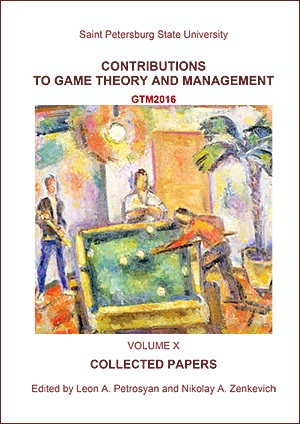Social Welfare under Oligopoly: Does the Strengthening of Competition in Production Increase Consumers' Well-Being?
Abstract
The paper studies the detailed comparison of the Social welfare (indirect utility) under three types of imperfect competition in a general equilibrium model: quantity oligopoly (Cournot), price oligopoly (Bertrand) and monopolistic competition (Chamberlin). The folk wisdom implies that an increasing toughness of competition in sequence Cournot-Bertrand-Chamberlin results in increasing of consumers' welfare (indirect utility). We show that this is not true in general. This is accomplished in a simple general equilibrium model where consumers are endowed with separable preferences. We find the sufficient condition in terms of the representative consumer preference providing the “intuitive” behavior of the indirect utility and show that this condition satisfy the classes of utility functions, which are commonly used in examples (e.g., CES, CARA and HARA). Moreover, we provide a series of numerical examples (and analytically verifiable conditions as well), which illustrate that violation of this condition may results in “counter-intuitive” behavior of indirect utility, when the weakest level of competition (Cournot) provides the highest amount of the consumer's welfare.
Keywords:
Cournot competition, Bertrand competition, free entry, Lerner index, indirect utility
Downloads
References
Downloads
Published
How to Cite
Issue
Section
License
Articles of "Contributions to Game Theory and Management" are open access distributed under the terms of the License Agreement with Saint Petersburg State University, which permits to the authors unrestricted distribution and self-archiving free of charge.




